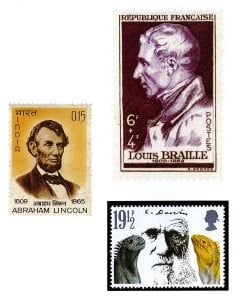Three revolutionary boys were born in the dawn of 1809: Abraham Lincoln, whose birthday we celebrate this month, Charles Darwin, and Louis Braille. I search Google for a comparison of their fame: Lincoln leads with 72,700,000 results, Darwin with 27,300,000, and Braille trails the pack with 1,180,000.
Who’s to judge their relative achievements? Each faced strong opposition to their points of view; each persevered with a fierce resolve and quiet strength. Most people are aware of the fortitude shown by both Lincoln and Darwin in the face of withering opposition, but few know that Braille’s trailblazing approach to reading and writing for his “fellows in misfortune,” as he referred to his classmates, was banned at the school where he invented it, under threat of punishment. “We had to learn the braille alphabet in secret,” as one student claimed later, “and when we were caught using it, we were punished.”
Fast-forward to a call this week from a customer, a sweet lady, from San Antonio, Texas. “I have an iPhone,” she begins the conversation. She heard NBP has a book to teach her how to use it. We do, I say, would you like the book in braille… it’s three volumes. No, she’s a slow braille reader, she admits, what other way can she read it? I offer eBraille. No, she doesn't have a refreshable braille display. Word? No, she doesn't have a computer. ePub? Doesn't know how to use her iPhone yet. DAISY? No, no DAISY player. “I just have an iPhone,” she sighs.
Well, it looks like braille is your best bet, I say. Take it slow. A few pages a day and you’ll learn to use your iPhone. I hear her smile on the other end. Despite all these newfangled ways to read, only braille is going to teach her to use an iPhone in the 21st century. What a revolutionary idea.

